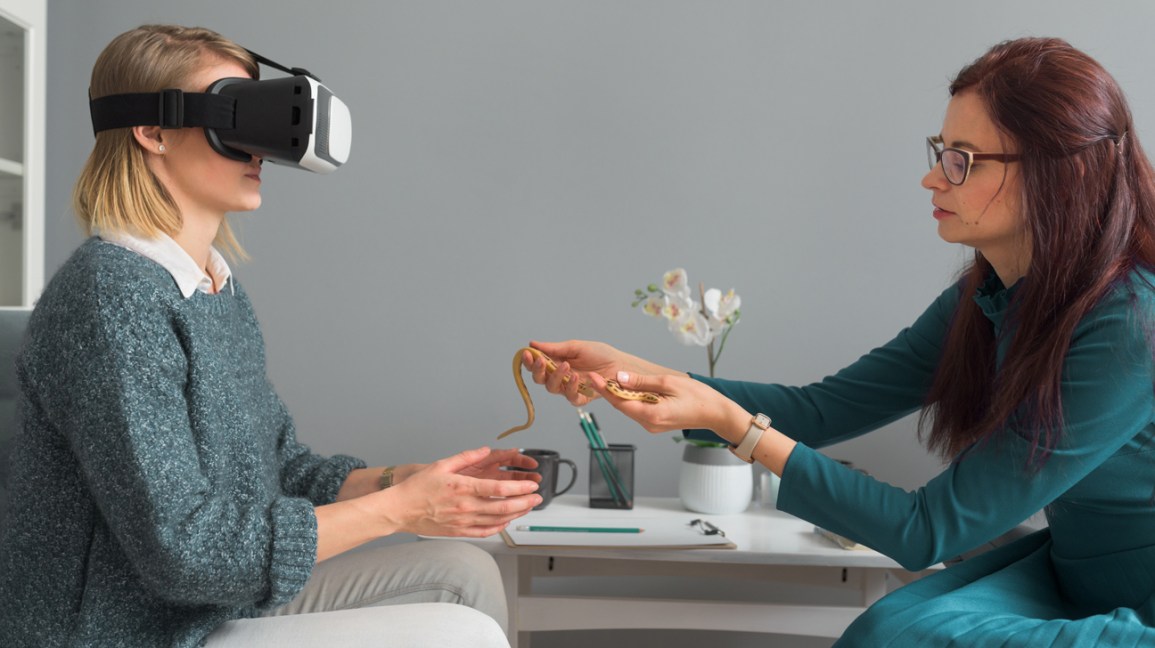
Exposure therapy is an effective behavioral therapy method for treating phobias and anxiety disorders
Exposure therapy involves exposing the target patient to a trigger or its context without any intention of causing harm. This helps the patient overcome fear or suffering. It is often referred to as cognitive behavioral therapy.
Exposure therapy has proven to be an effective treatment for many conditions and disorders, including anxiety and obsessive-compulsive disorder. A well-known example of a condition in which exposure therapy can help is bulimia nervosa. Bulimia symptoms include overeating and drinking too much.
Exposure to alcohol in an environment where it is not expected may increase the risk of developing this condition. Alcohol exposure is also an effective treatment for PTSD. Exposure therapy is also used to relieve pain due to bone fracture.
An occupational therapist or physical therapist may prescribe exposure therapy when a patient is in pain due to a bone fracture. In most cases, the patient needs to perform simple activities such as taking a bath, sitting in a chair, or doing household chores such as brushing their teeth. The therapist should remember to use appropriate equipment, such as a shower curtain, to help the patient avoid the impact of the trigger or its position.
Exposure therapy can be performed by a psychotherapist or physiotherapist. During exposure therapy, the therapist or psychotherapist will create a safe environment for the patient, avoiding exposing him to any trauma that may be related to their phobia or anxiety disorder.
The exposure therapist will place the patient in a safe environment, such as a bathtub, while the therapist's hands rest on the patient's skin. The patient will need to stay inside the bath or area without contact with anyone or objects that may be perceived to be causing the condition.
The therapist will repeat the treatment, alternating between the first and second session. Sometimes the therapist might require the patient to remain in the tub for several hours, until the condition has completely gone away.

Exposure therapy can be used to treat panic disorder, obsessive-compulsive disorder, post traumatic stress disorder, and phobias. Exposure therapy can also be used as a treatment for depression and eating disorders.
Some studies show that exposure therapy can reduce the symptoms of chronic fatigue syndrome. Exposure therapy is also useful in treating depression. Exposure therapy is effective in treating depression because of the fact that it helps a person overcome fears and anxieties.
Exposure therapy is particularly beneficial for patients suffering from asthma and other respiratory conditions. Patients who suffer from post traumatic stress disorder may find that exposing themselves to the condition can help them manage their emotions. In extreme cases, exposure therapy can also relieve the symptoms of anorexia.
Exposure therapy has also been helpful in treating the symptoms of Tourette's syndrome. In this condition, the patient may be unable to tell what they're feeling. feeling and expose themselves to situations in an attempt to identify the emotional implications of those feelings.
Exposure therapy is also used in a treatment for OCD, a condition in which the person suffering from the condition is unable to control the amount of time that they spend obsessively focusing on one particular thing. Exposure therapy can also be used as an alternative treatment for compulsive disorder or compulsive alcoholism.
Exposure therapy can also be useful in treating Obsessive Compulsive Disorder. The therapist will use a variety of different methods in the exposure therapy session including physical exercises, breathing exercises and hypnosis.